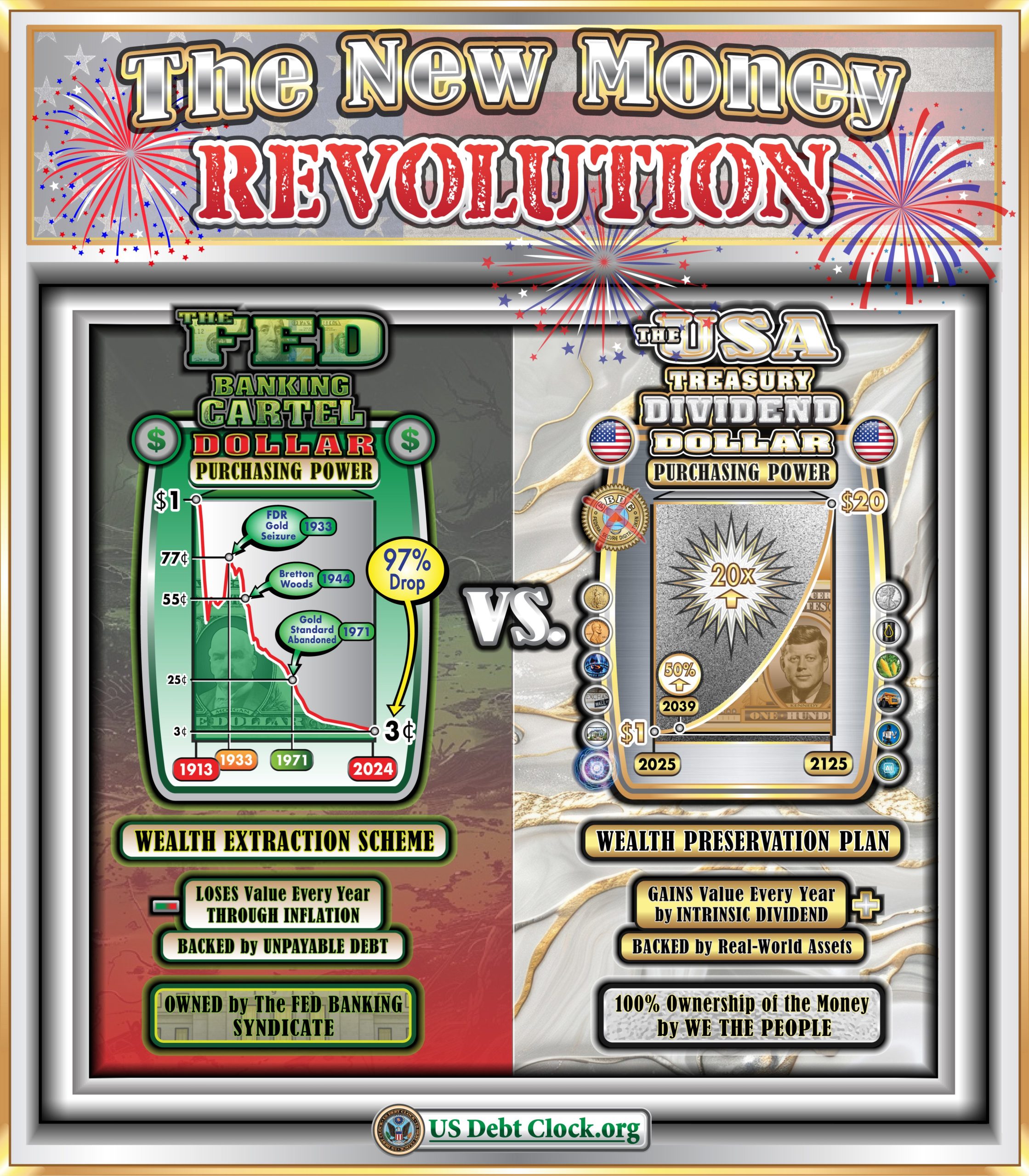In recent months, a significant shift has been quietly taking place in the financial world, and it’s being illustrated in real-time on social media platform X, via @USDebtClock_org. For those closely monitoring the images and data displayed, it’s clear that these are not merely visual representations of government debt but signs of an impending monetary transformation. One of the most telling indications is the gradual transition from Federal Reserve Notes (FERN) to Treasury Certificates—an event that has far-reaching implications for the U.S. economy and the global financial system.
What Is the U.S. Debt Clock?
The U.S. Debt Clock is a dynamic display that tracks the United States’ national debt, fiscal conditions, and monetary supply in real-time. While it’s been a powerful tool for illustrating the rapidly increasing levels of debt, its significance goes far beyond numbers. Recently, the images shared from this clock have been catching the attention of financial experts due to a subtle but crucial element—the shift from Federal Reserve Notes (the familiar U.S. dollar bills) to Treasury Certificates, a potential harbinger of a new monetary system.
From FERN to Treasury Certificates: What Does It Mean?
For over a century, Federal Reserve Notes have been the primary medium of exchange in the U.S. economy. Issued by the Federal Reserve, these notes form the backbone of the U.S. financial system and underpin the dollar’s status as the world’s reserve currency. However, the increasing debt burden, concerns over inflation, and growing public distrust in central banking systems have triggered discussions about alternatives.

Enter Treasury Certificates. Unlike Federal Reserve Notes, Treasury Certificates are directly backed by the U.S. Treasury, signaling a return to government-backed currency without the intermediary role of the Federal Reserve. If this transition accelerates, it could represent a monumental shift in monetary policy—one where the U.S. government takes back control over its currency issuance, potentially changing the dynamics of inflation, debt servicing, and economic growth.
The Significance of the U.S. Debt Clock Images
The consistent images shared on X by @USDebtClock_org illustrate this ongoing transition. The subtle shift in terminology—referencing Treasury Certificates alongside traditional monetary figures—hints at preparations for a broader monetary reform. This could mean several things:
- A Return to Sound Money Principles: Treasury Certificates, being directly backed by the U.S. government, could represent a move toward a more secure and stable form of currency. This shift would offer greater transparency and could serve as a safeguard against the devaluation of the dollar.
- Reduced Reliance on Central Banking: If the Treasury assumes a greater role in currency issuance, it could weaken the grip of the Federal Reserve on monetary policy. While the Fed has long been the key institution managing inflation, interest rates, and money supply, the introduction of Treasury Certificates could decentralize some of this power.
- Impact on Global Markets: A transition from Federal Reserve Notes to Treasury Certificates would have profound implications for the global financial system. The dollar’s role as the world’s reserve currency may be affected, leading to potential shifts in international trade, investment flows, and foreign currency reserves.
- Preparing for the Debt Crisis: With the U.S. national debt soaring past $33 trillion, finding a sustainable solution to debt management is becoming increasingly urgent. The introduction of Treasury Certificates could be one way to manage this burden, offering a pathway to restructured debt servicing or even a partial debt reset.
Why It Matters for Offshore Investors
For offshore investors, understanding these changes is critical. The transition from FERN to Treasury Certificates could lead to shifts in the value of the dollar, U.S. treasuries, and international asset allocation. If Treasury Certificates become the new form of money, their value may be tied more closely to U.S. fiscal policy rather than central banking maneuvers. This means that keeping a close eye on U.S. debt levels, fiscal policy changes, and the images coming out of @USDebtClock_org is essential for making informed investment decisions.
Offshore investors may want to hedge against potential currency volatility by diversifying into hard assets like gold, commodities, or other foreign currencies. As we stand on the cusp of this monetary revolution, being prepared for the ramifications of this shift is paramount.
Conclusion: A New Monetary System in the Making?
The images posted by @USDebtClock_org may appear cryptic to the casual observer, but for those paying attention, they signal the dawn of a new monetary era. The potential transition from Federal Reserve Notes to Treasury Certificates could redefine the U.S. financial system and have profound effects on global markets. Offshore investors would do well to stay informed about these developments and prepare for the possibility of a transformed currency landscape.
As this revolution unfolds, Invest Offshore offers opportunities for those seeking to protect their wealth amid uncertainty. Explore investment options in West Africa’s Copperbelt Region and other strategic ventures to diversify and safeguard your portfolio.

Leave a Reply